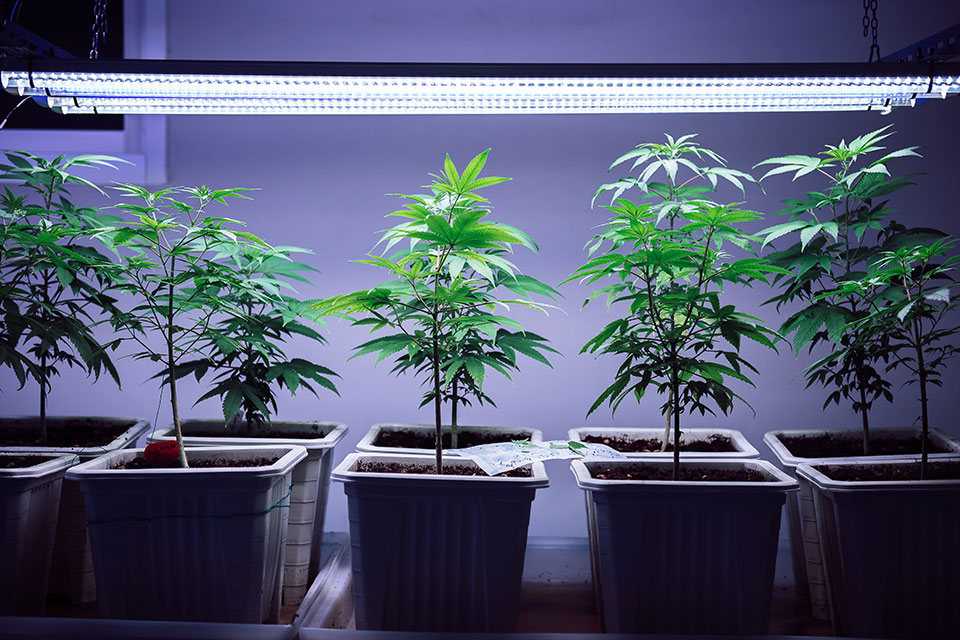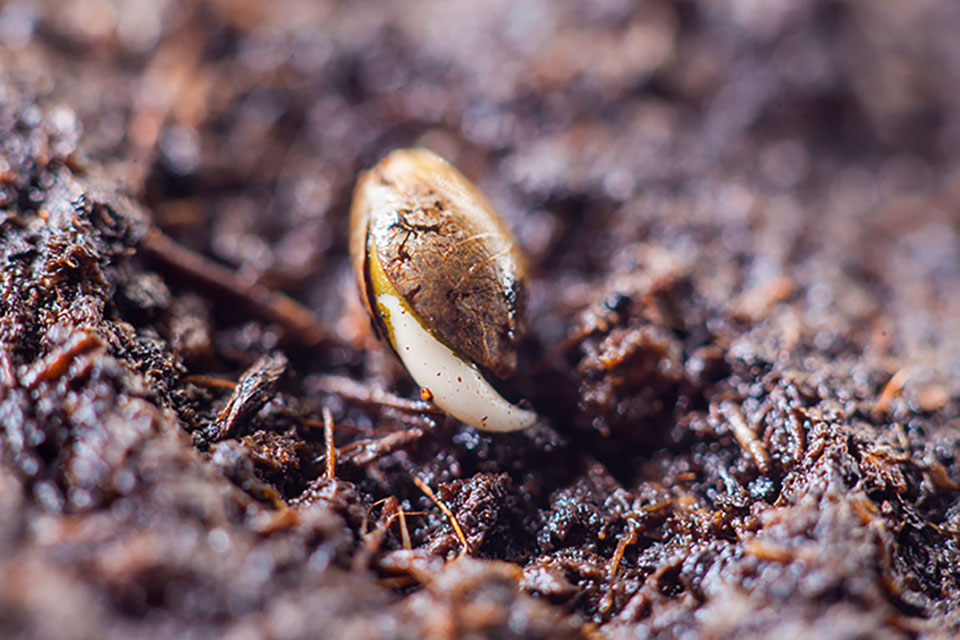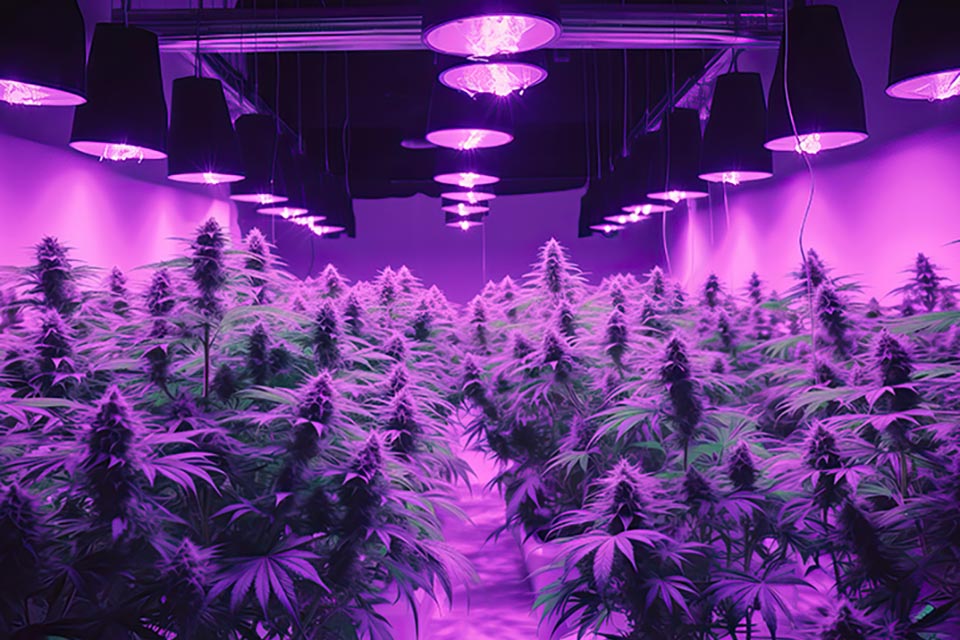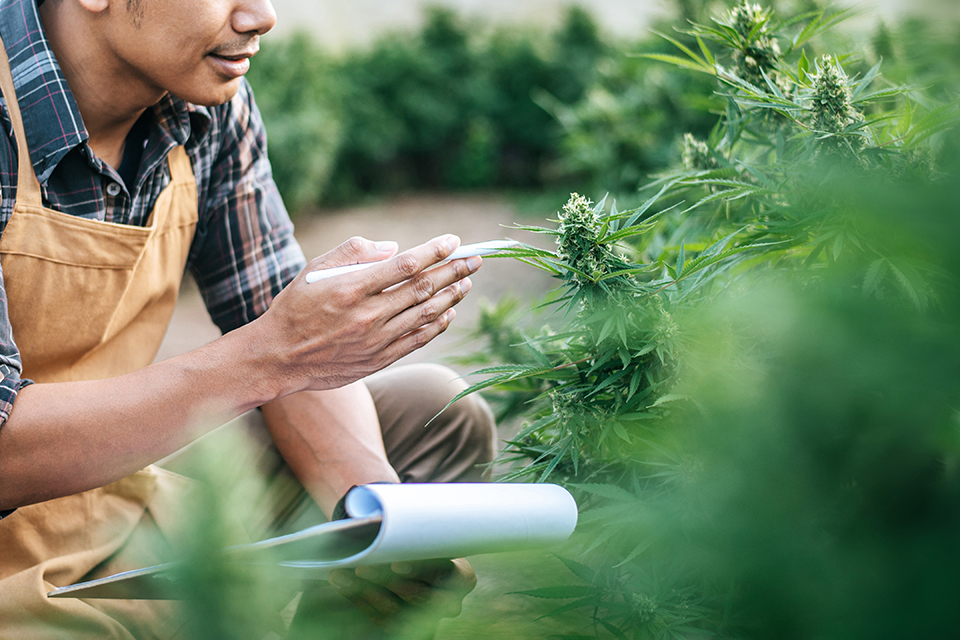
Stretching is a common challenge for novice cannabis cultivators, especially during early growth stages. When plants grow tall and leggy with weak stems, they become more prone to tipping, reduced airflow, and inconsistent bud development. Learning how to control and prevent stretching is essential for a successful harvest. You can promote stronger, more compact plants by managing light, temperature, nutrients, and training techniques. This guide breaks down the causes of stretching and how to stop it before it impacts your yield.
What Is Stretching in Cannabis Plants?
Stretching happens when cannabis plants grow tall quickly with excessive spacing between nodes. While some vertical growth is natural, especially during the early flowering phase, excessive stretching signals a problem with your growing environment. Stretched plants often have thin, weak stems that struggle to support bud weight later in the cycle.
Uncontrolled stretching can:
- Reduce overall yield by concentrating energy on vertical growth instead of flower production
- Create uneven canopy height, which complicates lighting
- Lead to unstable plants that are more prone to bending or snapping
Recognizing the signs of stretching and understanding its impact helps growers adjust their setup early and guide plants toward healthier, more productive growth.
Causes of Stretching in Cannabis Plants
Most often, stretching signals that something is off in your grow setup. The most common cause is inadequate light—plants naturally stretch to reach more light when they sense a shortage. Improper light spectrum or height can also lead to elongated stems. Temperature plays a role, too; overly warm environments speed up growth and make stems thinner and weaker.
Other stretching triggers include:
- Excessive humidity during the early stages
- Overfeeding nitrogen, which pushes rapid, unbalanced growth
- Crowded plant spacing, forcing plants to compete for resources
When multiple issues combine, stretching worsens quickly. Identifying the root cause helps you correct it before your plants become unstable or less productive.
How to Control Stretching in Cannabis Plants
If your plants are already stretching, there are several practical ways to slow the process and help your crop stay healthy and compact. Stretching doesn’t have to ruin a grow—small environmental changes and smarter setups can restore balance and control height before it affects yield.
Optimize Lighting Conditions
Light is the most common cause of stretching. When cannabis seedlings don’t receive enough light, or the wrong kind of light, they instinctively reach for it, resulting in long, weak stems.
- Use full-spectrum LED grow lights or high-output fluorescents during early growth.
- Keep lights 12–24 inches above seedlings, adjusting as they grow.
- Maintain 18–20 hours of light daily during the vegetative stage.
Spectrum and balanced light intensity communicate to your plants that they’re getting what they need—no stretching required.
Temperature and Humidity Control
Warm, humid environments can encourage plants to stretch faster than their roots can keep up. That growth imbalance creates instability and lowers yields.
- Keep temperatures around 70–80°F (21–27°C) during the day, and slightly cooler at night.
- Use fans or exhaust systems to manage airflow and reduce humidity spikes.
Consistent conditions support strong, balanced growth.
Nutrient Management
Too much nitrogen or the wrong nutrient ratio can overstimulate vertical growth early on.
- Choose a nutrient mix formulated for the vegetative stage.
- Avoid overfeeding and watch for signs of deficiency or excess.
Healthy, balanced plants grow thicker stems and stronger branches, not just taller stalks.
Prevent Stretching: Best Practices
Once stretching starts, it’s harder to correct—so prevention is key. By setting up the right conditions early, novice cultivators can avoid common mistakes and support compact, vigorous growth right from the start.
Choosing the Right Strain
Some strains naturally stretch more than others, especially tall sativa-dominant varieties. Beginners often have better results with indica or hybrid strains bred for indoor growing and manageable height. If space and control are top concerns, consider compact genetics or auto-flowering varieties.
Proper Plant Spacing
Crowded plants compete for light and airflow, leading to upward growth and weak stems.
- Space plants evenly to ensure each one gets equal access to light.
- Avoid clustering in the center of the growing area.
- Use reflective materials on walls to distribute light more evenly across all plants.
Training Techniques
Early training keeps plants short and productive while improving yield.
- Topping involves cutting the main stem to encourage bushier growth.
- Low-stress training (LST) gently bends and secures branches outward, spreading growth horizontally.
These techniques allow better light penetration and airflow, reducing the risk of stretch while maximizing flower development.
Preventive strategies give more control from the beginning. With the right strain, spacing, and training, you can stop stretching before it starts, producing strong, even canopies and healthier plants all season long.
Grow Stronger, Shorter Plants With the Right Techniques
Stretching happens often in early growth stages, but you can prevent it with thoughtful planning and consistent care. Each decision shapes how your plants grow, from optimizing light and spacing to choosing the right strain. Techniques like topping and LST add even more control.
Keep your plants compact, healthy, and productive. Shop high-quality seeds at Kind Seed Co and start your grow with genetics that respond well to training and deliver strong results.



